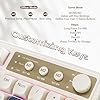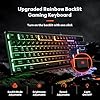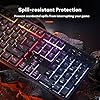Table of Contents
Introduction to Learning Piano Through Improvisation
Mastering the art of piano through improvisation is an enriching and creative approach that enhances musical expression and understanding. This method focuses on exploring the instrument beyond traditional boundaries, allowing students to develop a deeper connection with music. Improvisation encourages spontaneity and personal expression, making the learning process more engaging and enjoyable. By incorporating improvisational techniques, pianists can uncover a more intuitive and flexible approach to playing the piano, helping to unlock their full creative potential.
Understanding Chord Progressions
One of the foundational elements of piano improvisation is chord progressions. These are sequences of chords that are harmonically related and form the backbone of most musical pieces. As a beginner, start by learning common progressions, such as the 12-bar blues or the I-IV-V progression. Knowing these progressions provides a structure within which you can experiment with melodies and rhythms.
P71 Digital Piano Review and Guide
$0.00 (as of November 22, 2025 14:40 GMT -08:00 - More infoProduct prices and availability are accurate as of the date/time indicated and are subject to change. Any price and availability information displayed on [relevant Amazon Site(s), as applicable] at the time of purchase will apply to the purchase of this product.)Wicked - A New Musical Songbook by Stephen Schwartz | Piano Vocal Selections with 13 Broadway Hits | Sheet Music for Piano Voice and Guitar | Authentic Arrangements for Performers Students and Fans
31% OffReady for Theory Level 3 Piano Review Book (Ready for Theory Piano Review Books)
$12.95 (as of November 22, 2025 14:46 GMT -08:00 - More infoProduct prices and availability are accurate as of the date/time indicated and are subject to change. Any price and availability information displayed on [relevant Amazon Site(s), as applicable] at the time of purchase will apply to the purchase of this product.)The Piano Proficiency Exam Review Book
$14.57 (as of November 22, 2025 14:43 GMT -08:00 - More infoProduct prices and availability are accurate as of the date/time indicated and are subject to change. Any price and availability information displayed on [relevant Amazon Site(s), as applicable] at the time of purchase will apply to the purchase of this product.)Developing Motifs
A motif is a short musical idea, a pattern, or a phrase that can be developed and repeated throughout an improvisational piece. Beginners can start with simple motifs, using a few notes only. Experiment with varying these motifs by changing their rhythm, duration, pitch, or dynamics to build a more engaging piece.
Exploring Scales and Modes
Scales and modes provide a palette of notes that sound good together and are crucial for improvisation. Beginners should familiarize themselves with major and minor scales first, then explore more complex scales like the pentatonic, blues, or modes like Dorian and Mixolydian. Using scales can help in developing solos that are melodically interesting and harmonically correct.
Using Rhythmic Variation
Rhythm plays a critical role in making your improvisation lively and dynamic. Start with simple rhythms and gradually incorporate syncopation, dotted rhythms, and rests into your playing. Practicing with a metronome or backing tracks can greatly improve your rhythmic skills and timing, making your improvisation more cohesive.
Listening and Responding
Improvisation is not just about playing notes—it’s also about listening. Whether you’re playing solo or with others, active listening allows you to respond to the musical ideas presented. This can mean developing on a motif introduced by another musician, adapting your playing style to match the dynamics of the piece, or knowing when to take the lead or provide support.
Logitech MK270 Wireless Keyboard and Mouse Combo for Windows, 2.4 GHz, 8 Multimedia Keys, PC, Laptop, Wireless Keyboard Compact Mouse Combo - Black
33% OffAULA S99 Gaming Keyboard, Wireless Computer Keyboards, Tri-Mode Bluetooth/2.4GHz/USB-C Custom Creamy Keyboard with Number Pad, RGB Backlit Media Knob Cute Programmable Keyboard for PC Gamer - Green
15% OffRedragon K521 Upgrade Rainbow LED Gaming Keyboard, 104 Keys Wired Mechanical Feeling Keyboard with Multimedia Keys, One-Touch Backlit, Anti-Ghosting, Compatible with PC, Mac, PS4/5, Xbox
15% OffWireless Keyboard and Mouse Combo, Full Size Silent Ergonomic Keyboard and Mouse, Long Battery Life, Optical Mouse, 2.4G Lag-Free Cordless Mice Keyboard for Computer, Mac, Laptop, PC, Windows
$25.99 (as of November 22, 2025 07:20 GMT -08:00 - More infoProduct prices and availability are accurate as of the date/time indicated and are subject to change. Any price and availability information displayed on [relevant Amazon Site(s), as applicable] at the time of purchase will apply to the purchase of this product.)Practice and Experimentation
At the heart of improvisation is the willingness to experiment and learn through practice. Start by setting aside regular practice time dedicated to improvisation. During this time, experiment with different chords, scales, and rhythmic patterns. Record your sessions to identify areas for improvement and successes to further develop.
“`
How Improvisation Enhances Musical Understanding
Improvisation is a critical tool in comprehending and internalizing musical concepts. It offers a dynamic way to explore various elements of music beyond traditional methods. Below are key points on how improvisation enhances musical understanding:
Deepens Theoretical Knowledge
Applying music theory in real-time helps in internalizing scales, chords, and progressions directly through practice rather than mere theoretical study. When pianists improvise, they experiment with these elements, which solidifies their understanding and helps them see practical applications of theoretical knowledge.
Enhances Listening Skills
Improvisation requires acute listening, not just to one’s own playing but also to other musicians when playing in an ensemble. This develops a pianist’s ability to quickly adjust and respond musically to sounds and ideas presented by others, improving overall aural skills.
Boosts Creativity and Expression
Through improvisation, pianists can explore new musical ideas without restrictions, allowing for an authentic expression of emotions and thoughts. This freedom in musical expression fosters creativity and can lead to innovative ways of approaching music.
Improves Technical Fluency
As improvisation often pushes musicians to explore beyond their comfort zones, it naturally enhances technical proficiency. Players face challenges like unusual chord transitions or tricky rhythms, which require them to deepen their technical skills in a contextual and engaging manner.
Fosters Musical Independence and Confidence
Learning to think and act spontaneously in music significantly boosts a musician’s confidence and self-reliance. Pianists become more comfortable with making instant decisions and dealing with musical uncertainties, which is essential during solo performances or collaborations.
Encourages a Holistic Understanding of Musical Context
Improvisation is not just about playing notes; it’s about storytelling and understanding the role of each musical element in the narrative. It gives pianists insight into how different styles and genres use specific harmonic and rhythmic, helping them adapt these elements in their performances.
Practicing Scales for Improvisation
Mastering scales is crucial for improvisation. This involves not only playing major and minor scales but also exploring modes, such as Dorian, Mixolydian, and Lydian, which can provide varied tonal flavors in improvisation. Practice tips:
Practicing Chords for Improvisation
Understanding and implementing chords are foundational to creating rich and engaging improvisations. Key areas of focus should include major, minor, diminished, augmented, and extended chords like 7ths, 9ths, 11ths, and 13ths.
Creating Simple Improvised Pieces on the Spot
Improvisation can be a delightful and insightful way to learn piano, providing immediate feedback and fostering creativity. Here are some strategies to help beginners create simple improvised pieces on the spot:
Beginners should start improvising by using just one scale or mode—like the C Major scale. This restricts the number of notes, making it easier to focus on rhythm, dynamics, and articulation rather than note choice.
Integrate simple and familiar rhythmic patterns to keep the improvisation coherent. Using rhythms from well-known songs or basic patterns such as quarter notes and eighth notes can help maintain flow and add structure to your pieces.
Adding chords can dramatically enhance your improvisation. Start with basic triads (like C major, F major, G major) and experiment with simple progressions such as I-IV-V-I. The familiarity of these chords allows for more comfortable experimentation and helps frame your melodic ideas.
Listen to the phrases you play and try to respond to them as if you are having a conversation. This call-and-response approach keeps the improvisation dynamic and engaging. It allows you to explore different directions and responses to your musical questions.
Keep your improvisation sections short, especially when starting out. Aim for 1-2 minutes of continuous play. This helps maintain focus and reduces the pressure, allowing for more freedom and creativity within a manageable timeframe.
Always record your improvisation sessions. Listening back can provide insights into what works and what doesn’t, guiding your learning process. It also allows you to track your progress over time.
As you become comfortable, start challenging yourself with new techniques, unfamiliar scales, or altered rhythmic patterns. This can help develop versatility and adaptability in your playing style.
Combining Improvisation with Traditional Learning in Piano Education
Combining improvisation with traditional learning methods when learning piano offers a holistic approach that enhances both creative and technical skills. This method integrates the structured aspects of traditional music education, such as sight-reading, scale practice, and classical repertoire, with the creative freedom of improvisation. Such a blend not only increases engagement but also fosters a deeper understanding of musical theory and its practical application.
A strong foundation in music theory is pivotal in both traditional and improvisational piano learning. Understanding chord structures, key signatures, and time signatures helps in improvising with a better sense of direction and purpose. This theoretical knowledge allows students to explore new textures and sounds while remaining harmonically correct.
Mastery over scales is another crucial element of traditional piano learning that benefits improvisation. Practicing scales improves finger dexterity and movement across the keyboard, which are essential for fluent improvisational play. It also aids in understanding and recognizing patterns within music, allowing for quicker and more intuitive responses during improvisation.
Learning classical pieces provides insight into complex compositional structures, dynamics, and emotional expression. This repertoire enriches a student’s musical expression and technique, serving as a solid foundation for improvisational skills. Students can draw on their repertoire knowledge to borrow motifs and techniques while improvising, creating a more enriched musical experience.
Integrating improvisational techniques into traditional exercises can make practice sessions more engaging and musically stimulating. For instance, students can be encouraged to improvise a cadenza in a classical piece or to play a familiar scale in different rhythms and articulations. This approach helps maintain student interest and motivation while reinforcing musical concepts.
Using improvisation actively in teaching can help in diagnosing and addressing specific areas where students may struggle. For example, if a student has difficulty with a particular scale, asking them to improvise using that scale can provide a fun and effective way to practice troublesome spots. Moreover, it encourages a deeper understanding and retention of the skills as students see immediate applications for their knowledge.
Conclusion
In summation, learning piano through improvisation is not only a pleasurable and engaging method, it also fosters a deep musical understanding. This approach allows students to explore creative expression and build confidence in their musical abilities, equipping them with the skills to handle diverse musical situations. Moreover, it encourages a more intuitive connection with the instrument, which can greatly enhance the learning process overall. Thus, improvisation should be considered a vital component in piano education to cultivate versatile and innovative musicians.




































